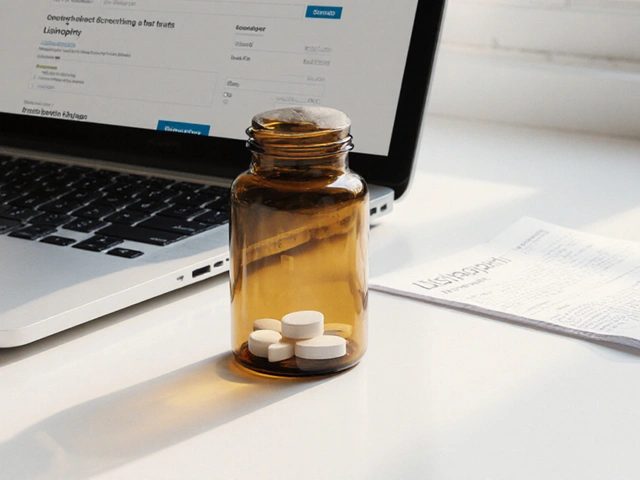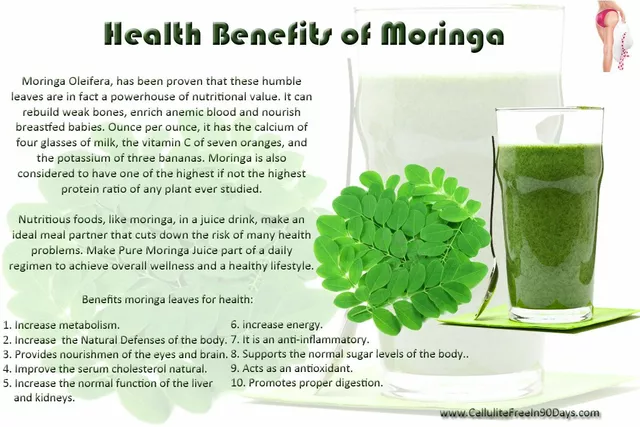TL;DR
- Parsnip root concentrates fibre, potassium, folate, and unique plant actives that support gut health, blood pressure, and steady energy.
- Start with 2-6 g parsnip powder daily (about 1-3 tsp) or 1-2 g in capsules with food; increase slowly to avoid gas.
- Choose products with clear sourcing, microbiological testing, and batch IDs; in Australia, look for appropriate food or TGA listings.
- Not a magic cure: it complements a balanced diet, movement, sleep, and stress control.
- Avoid or speak to your doctor if you use potassium-sparing meds, have kidney disease, or manage warfarin.
You clicked for a simple way to feel better without another complicated routine. This isn’t about hype. It’s about a humble root-parsnip-that can quietly help your gut, your heart, and your day-to-day energy when used in a smart, consistent way.
What Parsnip as a Supplement Really Means
When people hear “parsnip,” they picture a sweet, pale root roasted next to carrots. As a parsnip supplement, you’re usually getting the dried, milled root in powder or capsule form. Think of it as a whole-food concentrate rather than a stimulant or exotic extract.
Why consider it? Nutrient profile. Per 100 g of raw parsnip, USDA data shows roughly 75 kcal, ~18 g carbohydrates, about 5 g dietary fibre, ~375 mg potassium, a useful hit of vitamin C, and folate. You won’t take anywhere near 100 g as a supplement, but even a few grams add meaningful fibre and potassium to your day-two gaps many people have.
Forms you’ll see:
- Root powder (most common): versatile, mixes into smoothies, yoghurt, oats, or soups.
- Capsules: tidier, but you usually need multiple capsules to match a teaspoon of powder.
- Blends: parsnip combined with inulin, psyllium, or greens for gut or cardiometabolic goals.
What’s inside that matters:
- Fibre (mix of soluble and insoluble): supports regularity, nurtures beneficial gut bacteria, modestly helps LDL cholesterol when part of a fibre-rich diet.
- Potassium: helps balance sodium’s effects and supports normal blood pressure.
- Folate: supports normal homocysteine metabolism and cell function.
- Polyacetylenes (like falcarinol): plant compounds present in parsnip and carrot family roots; lab and animal studies suggest anti-inflammatory and antioxidant activity.
Who is this for? If your diet is light on vegetables, if you struggle to hit 25-38 g fibre per day, if your blood pressure creeps up when life gets salty, or you want a gentler fibre source than heavy-duty psyllium, parsnip can be a friendly nudge in the right direction. It won’t replace vegetables, movement, or sleep-but it helps you stack wins.
Evidence-Backed Benefits You Can Actually Feel
Gut health and regularity: The fibre in parsnip behaves like a slow, friendly traffic controller in your gut. Insoluble fibre adds bulk; soluble fibre feeds microbes that produce short-chain fatty acids like butyrate. These support the gut lining and smooth digestion. Large nutrition bodies (like the U.S. National Academies) set adult fibre targets at roughly 14 g per 1,000 kcal, but most people fall short. Bringing your total up-even by 3-5 g-often improves regularity in a week or two. Clinical reviews in journals such as Nutrients have shown that increasing soluble, viscous fibre can reduce LDL cholesterol by roughly 5-10% when taken consistently with a balanced diet.
Blood pressure support: Potassium helps your kidneys excrete sodium and relaxes blood vessel walls. An American Heart Association science advisory (2022) emphasised that higher potassium intake is associated with lower blood pressure, especially when sodium is high. A teaspoon or two of parsnip powder won’t overhaul your potassium intake, but it nudges the numbers the right way alongside fruit, veg, and legumes. For context, a medium banana has ~358 mg potassium per 100 g; parsnip sits in the same ballpark per 100 g. You’ll likely get tens of milligrams per teaspoon-not a mega-dose, but consistent small gains add up.
Steadier energy and appetite: Fibre slows digestion, which steadies glucose rise after meals. That translates to fewer spikes and dips-useful if mid-morning or mid-afternoon energy crashes are your thing. Pairing the powder with protein (like Greek yoghurt) and healthy fats (like nuts) strengthens this effect, a combo that studies on mixed macronutrient meals repeatedly show aids satiety.
Heart and metabolic health: Beyond blood pressure and LDL, diets higher in fibre-rich veg correlate with lower risk of cardiometabolic disease. That’s correlation, not cause, but the mechanisms-lipid-binding by viscous fibres, improved insulin sensitivity via gut metabolites, and better weight control due to satiety-are plausible and supported across multiple dietary trials compiled by organisations like the World Health Organization and the U.S. National Institutes of Health.
Anti-inflammatory potential: Parsnips contain polyacetylenes (falcarinol, falcarindiol), also seen in carrots and celery root. Work published in the Journal of Agricultural and Food Chemistry and related plant-food science journals shows these compounds have anti-inflammatory and antimicrobial effects in cell and animal models. Human data is early, so treat this as a bonus, not the reason to buy.
Is it low FODMAP? Monash University’s FODMAP program lists parsnip as low FODMAP at common serve sizes, which makes it friendlier than many roots for people who react to fermentable carbs. That said, any added fibre can cause gas while your gut adapts-go slow at first.

How to Use It: Doses, Timing, Pairings, and Real-Food Alternatives
If you want results without digestive drama, follow a simple ramp-up plan. No hero servings on day one.
- Pick your form: powder if you enjoy smoothies or oats; capsules if you’re often on the go. Blends are fine as long as labels are clear.
- Start low: 2 g powder (about 1 flat teaspoon) once daily with food for 3-4 days.
- Listen to your gut: If you feel good, bump to 4 g (2 teaspoons) daily. If still fine after a week, consider 6 g spread over two meals.
- Hydrate: Drink a glass of water with each dose. Fibre needs fluid to do its job.
- Pair smart: Combine with protein (yoghurt, protein shake) or fats (chia, nut butter) for steadier energy and better appetite control.
- Be consistent: Give it 2-3 weeks before judging. Fibre benefits build with daily use.
Capsules: Typical capsules are 500-1,000 mg. A practical routine is 1-2 capsules with breakfast and again with lunch (1-2 g total to start). Space them with meals to reduce any bloating.
Upper amounts: Most people don’t need more than 6-10 g per day from a supplement, especially if they also eat vegetables, grains, and legumes. Going high too fast invites gas and cramps-common with any fibre source.
Who should be cautious:
- Kidney disease or potassium-sparing meds (like spironolactone): extra potassium adds up-talk with your doctor.
- Warfarin: parsnip contains vitamin K; not huge amounts, but consistency matters on warfarin. Keep intake steady and coordinate with your care team.
- Severe IBS: even low-FODMAP foods can cause symptoms when added quickly. Stretch increases over several weeks.
- Allergies to Apiaceae family (carrot, celery): rare, but cross-reactions can happen.
Food-first options if pills aren’t your thing:
- Roast wedges: toss parsnip with olive oil, rosemary, and salt; roast until caramelised. Sweet, fibre-rich, and kid-friendly.
- Soup boost: blend cooked parsnip into pumpkin or chicken soup for body without cream.
- Oats upgrade: fold a tablespoon of cooked, mashed parsnip into porridge with cinnamon and walnuts. Sounds odd, tastes like dessert.
I live in Adelaide, and local winter parsnips are naturally sweeter after cold nights. In season, I cook them; out of season, I use powder a few times a week to keep fibre steady.
Buy Smart in 2025: Quality, Labels, and Red Flags
The supplement aisle can be the Wild West. Here’s a clean way to choose without spending your weekend comparing labels.
What “good” looks like:
- Clear identity: “Parsnip (Pastinaca sativa) root powder,” not vague “vegetable blend.”
- Sourcing transparency: country of origin and processing method (freeze-dried or low-heat dried helps preserve nutrients).
- Micro testing: batch-tested for microbes and heavy metals, ideally via an ISO/IEC 17025-accredited lab.
- No nonsense: no artificial sweeteners or unnecessary fillers. If flavoured, the ingredient list should still be short and readable.
- Batch and date: lot/batch number, packed-on and best-before dates.
Regulatory cues (Australia, 2025):
- Food vs supplement: Many root powders are sold as foods. That’s fine. If marketed with therapeutic claims, in Australia they should carry a TGA listing (AUST L or AUST R) and a permitted indication.
- Claims discipline: Be wary of products promising to “cure” anything. Legit brands use measured language about supporting health.
Price sense (AUD, typical market):
- Powder: A$18-A$35 for ~200 g depending on sourcing and testing. Organic and freeze-dried sit at the high end.
- Capsules: A$25-A$45 for a month’s supply (60-120 caps), heavily brand-dependent.
Storage and shelf life:
- Keep powder in a cool, dry, dark spot. Reseal tightly.
- Use within 6-12 months of opening for best flavour and potency.
Simple buying checklist you can screenshot:
- Pastinaca sativa root named on label
- Origin and drying method stated
- Third-party micro/heavy metal testing
- Lot number and date codes present
- No artificial sweeteners or unnecessary fillers
- Price per 100 g within expected range
Red flags:
- Vague blends without amounts per serving
- Therapeutic claims that sound like drug promises
- No batch number or best-before date
- Odd aftertaste or clumping right after opening (could be moisture exposure)

Fast Answers: Comparisons, FAQ, and Your Next Steps
Quick comparisons so you pick the right tool for the job:
- Parsnip powder vs psyllium: Parsnip is a gentler, whole-food fibre with potassium and folate; psyllium is stronger for regularity and LDL lowering but can bloat if you rush it.
- Parsnip vs chicory inulin: Inulin is a targeted prebiotic with big effects on gut bacteria, but it often causes gas. Parsnip is milder and more “food-like.”
- Parsnip vs carrot powder: Similar family and polyacetylenes; parsnip tends to have a sweeter, nutty flavour and slightly more fibre per gram in many products.
- Parsnip vs beetroot powder: Beetroot targets nitric oxide and exercise performance; parsnip leans into fibre and potassium for digestion and blood pressure support.
Mini-FAQ
- Can I take it every day? Yes, most people can. Start small and drink water. If you have kidney disease or take potassium-sparing meds, check with your doctor first.
- Will it help me lose weight? It can help with satiety and steadier energy, which supports weight control. It’s not a fat burner-you still need a balanced diet and movement.
- Is it ok for diabetes? As part of a fibre-rich meal pattern, it can help smooth post-meal glucose. Monitor your readings when you start any new fibre source.
- How long until I feel something? Many notice gentler digestion in 3-7 days. Lipid or blood pressure changes take weeks to months alongside diet changes.
- Does it cause photosensitivity like wild parsnip? The sap of wild plants can irritate skin, but the edible root powder doesn’t behave like that. Still, avoid contact with plant sap when gardening.
- Is it safe in pregnancy? Parsnip is a normal food with folate, but supplements vary. If you’re using concentrated powders regularly, run it by your midwife or GP.
- Low-FODMAP friendly? Typical amounts are generally tolerated. Introduce slowly and note your personal response.
Next steps by persona
- Busy beginner: Add 1 teaspoon to your breakfast yoghurt for 5 days, then 2 teaspoons if you feel fine. Keep a water bottle handy.
- Athlete or active tradie: Mix 1-2 teaspoons into a post-training smoothie with protein. You’ll get steadier energy into the afternoon.
- Desk worker with afternoon slumps: Stir 1 teaspoon into oats or a protein shake at lunch. Pair with a handful of nuts.
- Older adult aiming for heart health: Build a simple routine-1 teaspoon with breakfast porridge, plus two extra veg serves a day. Recheck blood pressure in 6-8 weeks.
- IBS-prone: Start with 1/2 teaspoon for a week. If fine, move to 1 teaspoon. Keep a simple food/symptom note on your phone for two weeks.
Troubleshooting
- Bloating or gas: Halve your dose and increase every 4-5 days. Take with food and water. Give your gut bacteria time to adjust.
- No change after 3 weeks: Confirm you’re taking 4-6 g a day and drinking enough fluid. Consider pairing with a proven viscous fibre like psyllium at a small dose.
- Strange taste or clumps: It may have absorbed moisture. Break up clumps, and store with a desiccant or in the fridge. If smell or colour seems off, contact the brand.
- Cramping: You may be going too fast or too high. Drop back to the last comfortable dose and hold there for a week.
- On multiple meds: Keep your intake steady day-to-day, and take the powder with meals, not at the same time as your tablets. If unsure, give your pharmacist the label.
One last nudge: you don’t need perfect. Get in the habit-small daily doses, real food around it, a bit of movement-and this simple root will quietly pull its weight.






cedric Gicquiaud
August 27, 2025 at 23:09
They've got the whole narrative glued together like a tapestry of hidden agendas, and you’re missing the fact that parsnip powder is being pushed as a “natural” fix while the biotech labs are embedding micro‑sensors to track metabolic responses. The data they collect is then sold to insurance firms that want to price your premiums based on gut health trends. It’s not just about fibre; it’s about who controls the information flow. Even the “third‑party testing” claims are often forged by shell companies that exist only on paper. Keep your eyes open and demand the raw data, not just the glossy marketing blurbs.